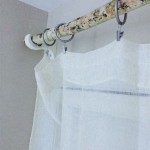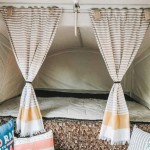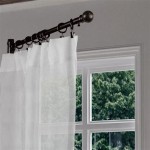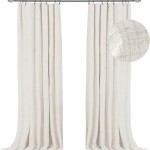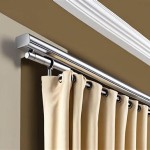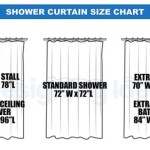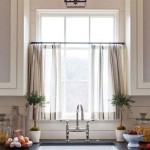Waterproof Curtains for Windows in Showers: A Comprehensive Guide
Integrating a window into a shower enclosure introduces natural light and ventilation, enhancing the bathing experience. However, this design feature also presents water management challenges. Without proper protection, windows within a shower are susceptible to water damage, mold growth, and reduced longevity. Waterproof curtains offer a practical and aesthetically pleasing solution, providing a barrier against water exposure while maintaining the benefits of natural light and airflow. This article explores the considerations for selecting and installing waterproof curtains for windows in showers.
Understanding the Need for Waterproof Protection
Windows, by their nature, are designed to withstand external weather conditions. However, the concentrated and prolonged exposure to moisture within a shower environment presents a unique set of challenges. The constant spraying of water, coupled with the elevated humidity and temperature, can lead to several issues if the window is not adequately protected. These issues include water damage to the window frame and sill, often constructed of wood or other susceptible materials. This damage manifests as rot, warping, and structural weakening. The growth of mold and mildew is accelerated by the damp conditions, posing health risks and creating unpleasant odors. Furthermore, excessive moisture can compromise the window's seal, leading to condensation between the panes and reducing its insulating properties. This can, in turn, affect the overall energy efficiency of the bathroom. Therefore, a reliable waterproof barrier is essential to safeguard the window and its surrounding area from moisture-related damage.
The type of window installed is also relevant to the need for protection. Single-pane windows are more vulnerable to condensation than double- or triple-pane windows, making waterproof curtains even more crucial. Similarly, windows with wood frames require more diligent protection compared to those with vinyl or fiberglass frames, which are naturally more resistant to moisture. Even with moisture-resistant frames, the sealant around the window can degrade over time, creating pathways for water intrusion. In addition to protecting the window itself, a waterproof curtain can also protect the surrounding wall and tile from water damage, preventing costly repairs and maintaining the aesthetic appeal of the shower area.
Beyond the physical damage to the window and surrounding structure, prolonged exposure to moisture can also affect the air quality within the bathroom. Mold and mildew spores released into the air can trigger allergic reactions and respiratory problems, especially for individuals with sensitivities or pre-existing conditions. A waterproof curtain can significantly reduce the risk of mold growth, contributing to a healthier and more comfortable bathroom environment. For these reasons, installing a waterproof curtain for a window inside a shower is a proactive measure that protects the window, prevents water damage, minimizes health risks, and preserves the overall integrity of the bathroom.
Key Considerations for Selecting Waterproof Shower Curtains
Choosing the right waterproof shower curtain for a window requires careful consideration of several factors, including material, size, design, and installation method. The primary objective is to select a curtain that effectively repels water, resists mold and mildew growth, and complements the overall aesthetic of the bathroom. The selection process should prioritize durability, functionality, and ease of maintenance.
Material: The material of the shower curtain is the most critical factor in its waterproof performance. Common waterproof materials include vinyl, PEVA (polyethylene vinyl acetate), and fabric treated with a waterproof coating. Vinyl curtains are generally the most affordable and provide excellent water resistance, but they may contain phthalates, which are considered potentially harmful chemicals. PEVA is a chlorine-free alternative to vinyl and is considered a safer option. Fabric shower curtains, typically made of polyester or nylon, are often treated with a durable water repellent (DWR) coating. While these curtains can be visually appealing, the effectiveness of the DWR coating can diminish over time and with repeated washing. Look for curtains that are specifically labeled as "waterproof" rather than "water-resistant," as the former provides a higher level of protection. The thickness of the material also matters; thicker curtains tend to be more durable and provide better water repellency. Additionally, consider the material's resistance to mold and mildew. Some curtains are treated with antimicrobial agents to inhibit the growth of these organisms.
Size and Dimensions: Accurate measurements are crucial for ensuring that the shower curtain provides adequate coverage and prevents water from splashing onto the window and surrounding areas. Measure the width and height of the window opening, adding several inches to each dimension to allow for overlap and prevent water leakage. The curtain should extend beyond the window frame on all sides to create a complete seal. Consider the placement of the showerhead and the direction of the water spray when determining the required curtain size. If the showerhead is positioned close to the window, a larger curtain may be necessary to provide adequate protection. Also, assess the available space around the window frame to ensure that the curtain does not obstruct any fixtures or interfere with the operation of the window itself. A curtain that is too small will not effectively prevent water from splashing onto the window, while a curtain that is too large may be cumbersome and visually unappealing.
Design and Aesthetics: While functionality is paramount, the design and aesthetics of the shower curtain should also be considered to complement the overall style of the bathroom. Waterproof curtains are available in a wide range of colors, patterns, and textures, allowing for seamless integration with existing décor. Choose a curtain that enhances the visual appeal of the shower area and creates a cohesive look. Consider the color scheme of the bathroom, the style of the tiles, and the design of the other fixtures when selecting a curtain. Neutral colors, such as white, gray, and beige, are versatile and can easily blend with various bathroom styles. Patterned curtains can add visual interest and personality to the shower area, but it's important to choose a pattern that is not too overwhelming or distracting. Translucent or semi-transparent curtains can allow more light to pass through, creating a brighter and more open feel in the shower. However, these curtains may offer less privacy than opaque curtains. Ultimately, the choice of design and aesthetics is a matter of personal preference, but it's important to select a curtain that is both functional and visually appealing.
Installation and Maintenance of Waterproof Shower Curtains
Proper installation and regular maintenance are essential for maximizing the lifespan and effectiveness of a waterproof shower curtain. The installation process involves securely attaching the curtain to the window frame or surrounding wall, ensuring that it provides a complete and watertight seal. Regular maintenance includes cleaning the curtain to prevent mold and mildew growth and addressing any signs of wear and tear.
Installation Methods: The installation method will depend on the type of curtain and the construction of the window frame and surrounding wall. Common installation methods include using tension rods, adhesive hooks, or a combination of both. Tension rods are easy to install and require no drilling, making them a convenient option for renters or those who prefer a non-permanent solution. However, tension rods may not be suitable for heavier curtains or windows with smooth, non-porous surfaces, as they may slip or fall. Adhesive hooks provide a more secure attachment, but they require careful placement and may damage the wall surface upon removal. For a more permanent and secure installation, consider using screws or nails to attach the curtain directly to the window frame or wall. Ensure that the screws or nails are rust-resistant to prevent corrosion in the humid shower environment. Before installing the curtain, thoroughly clean the window frame and surrounding wall to remove any dirt, grease, or mildew. This will ensure a strong and long-lasting bond between the curtain and the surface.
Creating a Watertight Seal: Creating a watertight seal is critical for preventing water from splashing onto the window and surrounding areas. The curtain should extend beyond the window frame on all sides, overlapping the adjacent wall or tile. Use caulk or sealant to fill any gaps between the curtain and the wall, creating a barrier against water intrusion. Pay particular attention to the bottom edge of the curtain, as this is where water is most likely to splash. Consider using a weighted hem or magnetic closures to keep the curtain in place and prevent it from billowing out during the shower. If the showerhead is positioned close to the window, consider installing a shower curtain rod that curves inward, directing water away from the window. Regularly inspect the seal around the curtain and reapply caulk or sealant as needed to maintain its watertight integrity.
Regular Cleaning and Maintenance: Regular cleaning and maintenance are essential for preventing mold and mildew growth and extending the lifespan of the shower curtain. After each shower, wipe down the curtain with a clean, dry cloth to remove any excess water. This will help prevent the buildup of moisture and reduce the risk of mold and mildew growth. Periodically clean the curtain with a mild soap and water solution. Use a soft brush or sponge to scrub away any stains or mildew. For stubborn stains, consider using a bleach solution, but test it on a small, inconspicuous area first to ensure that it does not damage the curtain. Rinse the curtain thoroughly with clean water and allow it to air dry completely before reattaching it to the window. Machine-washable curtains can be washed according to the manufacturer's instructions. However, avoid using harsh detergents or bleach, as these can damage the waterproof coating. Regularly inspect the curtain for any signs of wear and tear, such as tears, holes, or fading. Replace the curtain as needed to maintain its waterproof effectiveness and aesthetic appeal.

Small Window Curtains For Bathroomombre Waterproof Curtain Shower

Shower Window Curtain Waterproof Plastic 40 W X 36 L Pack Of 1 Frosted

Waterproof Shower Curtain With Liner Linen Bath Bathroom Custom Clawfoot Tub Boho Etsy

Window Covering Ideas For Your Bathroom

Aoibox 72 In W X 84 L Waterproof Fabric Shower Curtain Seal Teal Snph004in389 The Home

Zenna Home 70 In X 72 Zen Garden Peva Waterproof Shower Curtain 51700ygrn The

How We Added Privacy Charm To Our Shower With A Waterproof Cafe Curtain Stay Home Style

Jakooz Waterproof Rollup Bathroom Curtain Heavy Duty Shower For Bathtubs Wave

Custom Shower Curtains Bathroom Curtain Drapes

The Best Privacy Options For Your Bathroom Windows

